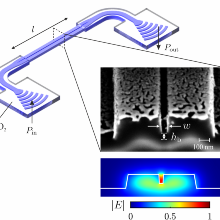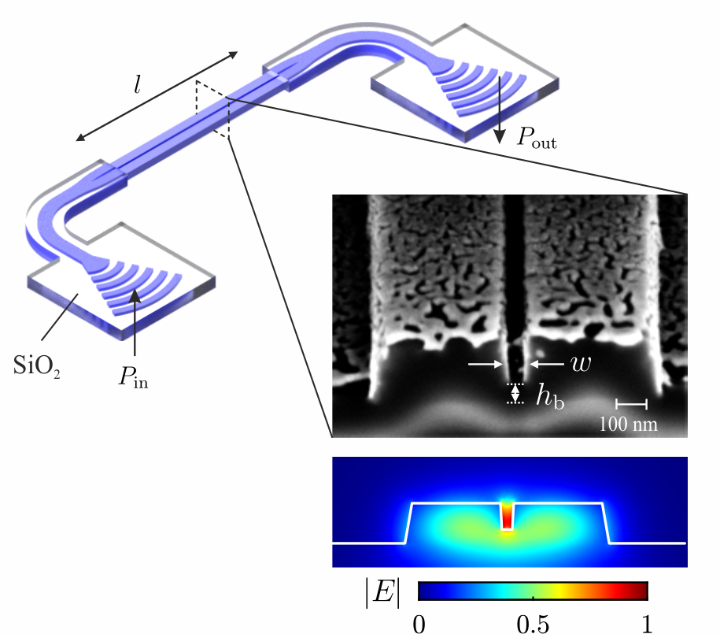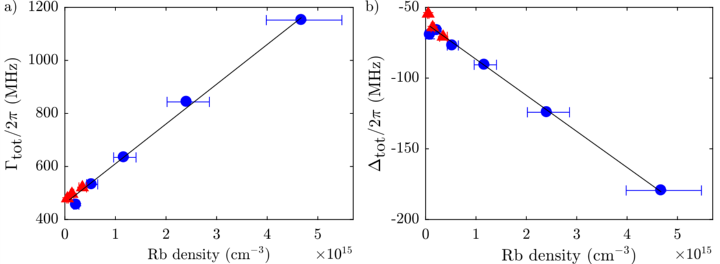Atomic vapor cells find use in a large variety of practical applications ranging from sensing to referencing tasks and possibly quantum information processing. The integration of such vapor cells with chip-scale photonic devices has the potential to miniaturize and incorporate light sources, optical elements, active media and detectors on a single platform. In our previous works [1,2] we followed this approach by interfacing thermal atoms with devices based regular waveguides, where the atoms interact only with the tail of the evanescent field while the major part of the mode resides in the core material. In contrast, slot waveguides, as the one shown below, provide high intensity of the guided light field in a region which overlaps with the atomic vapor therefore enabling enhanced atom-light coupling compared to conventional waveguides.
In our latest publication [3], we systematically investigate the interaction between thermal rubidium vapor and slot waveguides with different slot widths and lengths. To complement our studies, we developed a detailed simulation model taking into account the specific geometry of the individual devices and the associated atom-surface interactions. Due to limitations in the fabrication process of the optical chip, the structures exhibit a gradual transition from a single ridge waveguide to fully opened slot waveguides. As shown in figure 2, our model agrees well with the measurements, except for the transition region where the slot is not yet completely developed.
Additionally, we performed density dependent measurements to study atom-atom interactions within a region that is transversally restricted to a subwavelength scale defined by the penetration depth of the evanescent field, thus constituting a quasi-one-dimensional system. As shown in figure 3, the atom-atom interactions manifest themselves in a broadening and frequency shift of the spectroscopy signal which both increase linearly with density.
[1] R. Ritter et al., Atomic vapor spectroscopy in integrated photonic structures, Appl. Phys. Lett. 107, 041101 (2015)
[2] R. Ritter et al., Coupling thermal atomic vapor to an integrated ring resonator, New J. Phys. 18 103031 (2016)
[3] R. Ritter et al., Coupling Thermal Atomic Vapor to Slot Waveguides, Phys. Rev. X 8, 021032 (2018)





